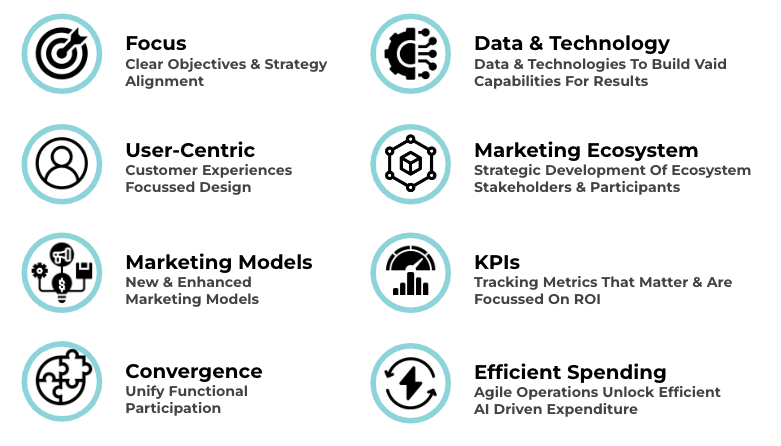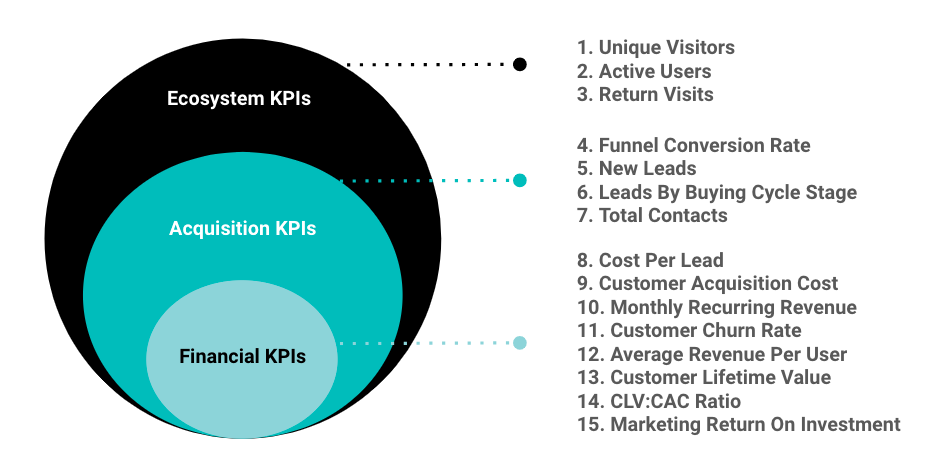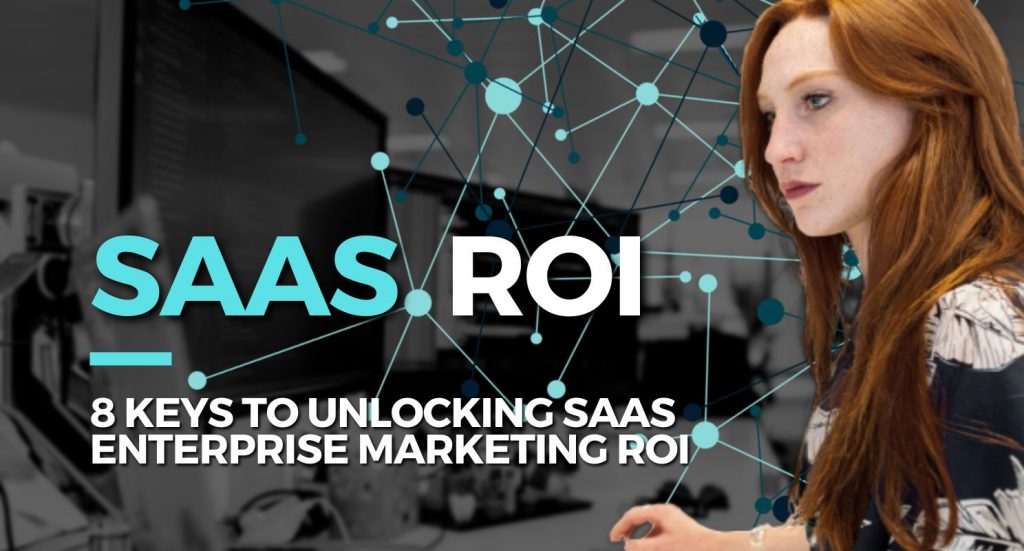[SaaS] Here’s Exactly How Ex-Facebook and Ex-Google Specialists Are Generating The Highest Returns On Marketing Spend In The Industry Today
This article reveals what we have discovered to be the core principles for profitable SaaS growth. We explore the SaaS business model and what can be done to ensure marketing is delivering real returns.
When we think of SaaS, we usually picture something like Salesforce, HubSpot, QuickBooks, Dropbox, Airbnb, and PayPal. The list goes on.
In essence – a SaaS business model means selling cloud-hosted software to an end user and it is usually monetized via a subscription or a license fee. In order to have a return on marketing investment one should simply ensure that the customer acquisition costs are less than the customer lifetime value
Sounds quite simple right?
Fueled by the massive revolution of consumer connectivity, this new information-rich era is often referred to as the ‘Digital Economy’ and SaaS business models thrive in this environment for many reasons.
The barriers of market entry have never been at such an all time low. Any organisation can build impactful Software that solve problems and add value to the economy in new and reimagined ways.
Most businesses however, Struggle to competitively scale such profitable business models and maintain stable ‘cash flow runways’ to see product cycles reach maturity within their portfolios.
To understand profitable SaaS growth, we first have to look at the pillars of a SaaS business model – questions like these are a excellent starting point before moving to the marketing question.
7 Questions To Ask For SaaS Business Model Growth
- Is the SaaS solution really solving a problem?
- Is the business model scalable?
- Can you acquire new customers profitably over time?
- Can you maintain customer excellence at scale?
- Do you have a cash flow runway?
- Do you have the right team and operations in place?
- Are you informing media investments in a data-driven way?
Asking the right questions can help determine the allocation of resources and culminates a beautiful design process.
In a fast-paced digital economy, Focus is king. When resources are scarce, which is often the case for SaaS projects, this needs top priority.
Marketing, especially for SaaS, means really understanding how to drive sustainable revenue and demand in a data-driven and smart way.
As opposed to merely smiling and dialing combined with vanity metrics like shares and likes…
The Top 8 Keys To Unlock Enterprise SaaS Marketing ROI

1. Focus
Start by identifying the exact objectives at an organisational level and formulate a basis for the marketing strategy and growth agenda.
Clarity and strategic alignment around key revenue portfolios will set the foundation for informed direction around media and marketing investment.
2. User-Centricity
At the height of consumer connectivity, we find that in the digital economy, the consumer has more ‘say’ than ever before. The average consumer or B2B prospect interacts with multiple brands and users. These interactions span many channels and interconnected platforms with information readily available within a split-second search result.
Given the complexity of user journeys and the valuable opportunities within relationships in these so-called ‘digital ecosystems’, your strategy should fully embrace your target audience and how this correlates to their buying cycle. Bring the human element back into the conversation, business is done via people, not machines.
3. Marketing Model
In an agile and competitive digital era, we need much more than a marketing mix. Marketing has changed rapidly over the past 50-80 years and has expanded beyond the platform left by the marketing mix model.
Looking at the availability of data and formulating a converged model that incorporates user-level data to surpass linear plateaus.
Truly thriving and measuring growth means questioning the status quo and adding more advanced models into the ‘mix’ that utilize real data instead of bureaucratic opinion-styled marketing ‘hunches’
4. Foundational Inclusivity
We can agree that marketing and sales is no longer seen as 2 completely different functions in a business.
Companies that truly thrive understand systems thinking and how inputs and outputs are all correlated to achieving organisational goals.
If different functions and departments each protect their own interest, resources and information, the ‘system’ struggles to increase throughput.
Completely unifying marketing, sales, product development and other functions enable the flow of critical information and feedback loops to validate ideas, hypotheses and strategies.
5. Data & Technology
It is clear that marketing technologies are driving the inches needed to deliver competitive returns compounded. We must be careful not to see these tools and tactics as core drivers of organisational strategy.
Technologies and data should be understood for their limitations, strengths and use cases instead of be-all and end-all solutions.
Examples of capabilities that can be developed by technology include: Marketing ROI measurement, impact analyses, Machine Learning for spending, Customer acquisition modelling etc. Unified and collectively utilized instead of resting on one tool or tactic as a strategy for organisation goals
6. Digital Marketing Ecosystem
SaaS business models can be quite intricate and interconnected with various stakeholders, entities, platforms and channels. This SaaS model as an ecosystem unlocks a new way of thinking adopted from natural ecosystems.
Mapping out a basic model of your business and the flow of information, resources and value can provide a fresh perspective to an age-old question.
Certain patterns, relationships and platforms have more weight to overall output and mapping these observations will create levers that can be operated to grow these ecosystems competitively at scale
For B2B SaaS ecosystems one might find more interactions with multiple stakeholders in various channels as opposed to B2C SaaS ecosystems that are more user centric and consumer orientated.
7. KPIs, Metrics And 8. Efficiency
Optimizing marketing through various channels and spending controls ensures execution of a converged, consumer-centric and ROI-mindset ecosystem:
The Top 15 KPIs for Enterprise SaaS Marketing Success:

SaaS Marketing KPIs can be split into 3 broad categories
1. Ecosystem Metrics
- 1.A) Unique Visitors
- 1.B) Active Users/Sessions
- 1.C) Return Visits
2. Acquisition Metrics
- 2.A) Funnel Conversion Rate (CR)
- 2.B) New Leads
- 2.C) Leads By Buying Cycle Stage (MQL, SQL)
- 2.D) Total Contacts
3. Financial Metrics
- 3.A) Cost Per Lead (CPL)
- 3.B) Customer Acquisition Cost (CAC)
- 3.C) Monthly Recurring Revenue (MRR)
- 3.D) Customer Churn Rate
- 3.E) Average Revenue Per User (ARPU)
- 3.F) Customer Lifetime Value (CLV)
- 3.G) CLV:CAC Ratio
- 3.H) Marketing Return On Investment (MROI)
In Conclusion
Digital Is Now.
Proactively approaching marketing as an investment instead of a cost factor reaps the rewards in the long run.
- Strategic Alignment. To reap returns effectively there needs to be strategic alignment between business objectives and the customer experience
- Customer Excellence. Front-facing approach with a customer journey design that addresses users in various stages of the buying cycle
- Agile Operations. Learning fast and having a free flow of resources and information within the organisation to enable a fast feedback loops
- Digital Ecosystems. Building and investing in the growth of digital ecosystems and ensuring resources are allocated profitably
- Data & Technology. Tracking returns and key metrics to extract valuable insights to inform marketing and sales decisions – the data-driven way
